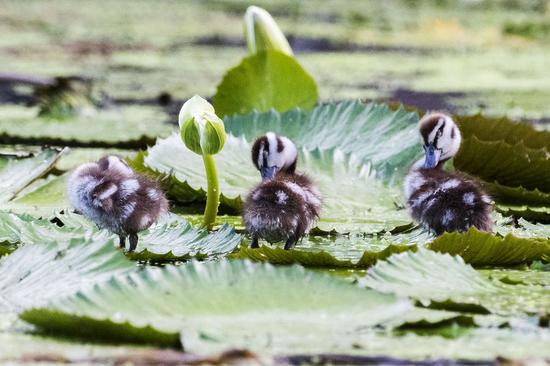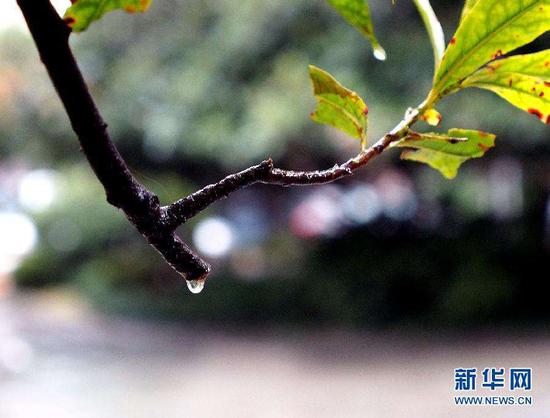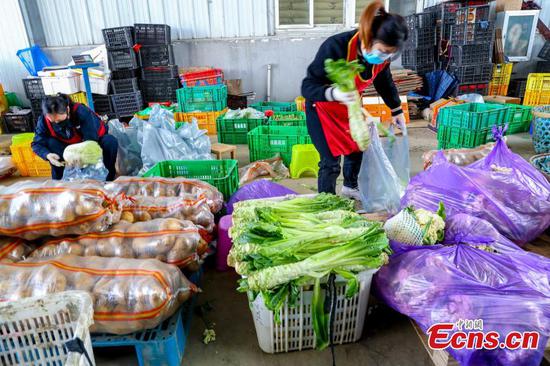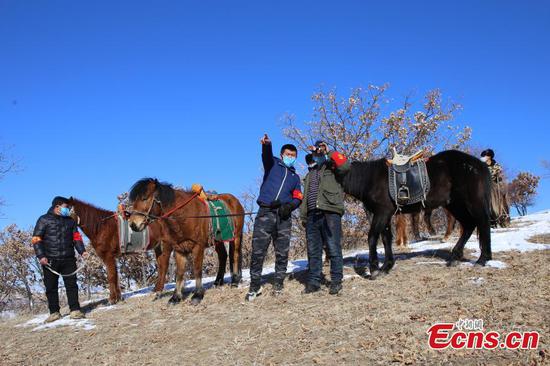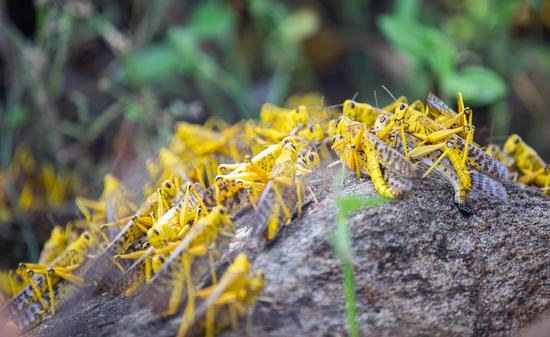
A swarm of desert locusts invade parts of Mwingi Town in Kitui County, Kenya, Feb. 20, 2020. (Xinhua/Zhang Yu)
EAT AWAY HOPE
The locust outbreak is the worst in 70 years in Kenya, and the worst in 25 years in Somalia and Ethiopia, where the insects bred before spreading to Kenya and other countries.
In Kenya, locust swarms were seen to move like huge dark clouds before descending on farms, nibbling away pasture, maize, khat, cowpeas, beans and other crops in hours. Areas like Mandera and Isiolo in the north, and Tharaka Nithi in central Kenya, were attacked again after aerial chemical pesticides spraying.
Although the government has sprayed pesticide and other chemicals on a wide range of areas in order to curb the locust outbreak, at least 18 of Kenya's 47 counties were affected.
Kello Harsama, the administrative secretary heading the State Department for Crop Development under Kenya's Ministry of Agriculture, said the government will work with the FAO to train 600 chemical spraying personnel.
"Aerial spraying of the pesticide in the last two months is yet to achieve desired results, thus we need to devise innovative strategies like the use of the trainees, farmers and extension workers to conduct ground spraying starting with northern counties of Isiolo, Marsabit, Turkana and Wajir," he said.
"My crops had done well following the heavy rains and I was looking forward to a bumper harvest but then the locusts came and ate away my hope," Beatrice Ngari, a farmer in Embu, central Kenya, told Xinhua. But Ngari was unaware that it is also the predicament of many farmers across Kenya, Somalia, Ethiopia, Tanzania, South Sudan and Uganda.
The rains between October and January served to provide a favorable environment for locusts to breed and thrive, including properly moist soils for them to lay eggs in millions before migration and the consequent lush vegetation to eat, according to the FAO.
Climate change was to blame for the unusually plentiful rainfall on the African continent. Keith Cressman, the FAO's senior locust forecasting officer, further identified the recent cyclones as another factor behind the locust crisis, saying the past 10 years saw increased frequency of cyclones in the Indian Ocean.












